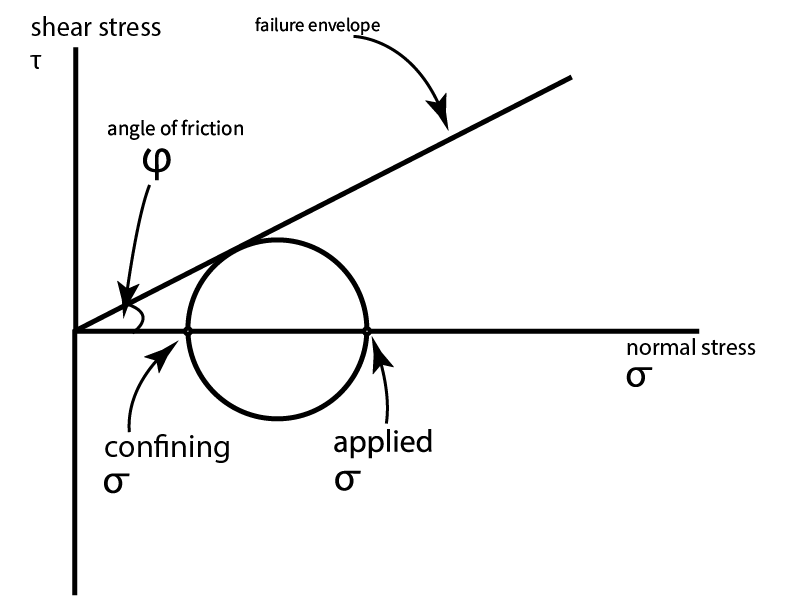In geotechnical engineering and soil mechanics, the friction angle of soil is, at its most basic level, a property that helps to quantify a soil’s shear strength. If that seems kind of abstract, that’s because it is.
What does the friction angle actually represent? Does it physically represent anything? Well, not exactly.
Besides density, the friction angle of a soil depends on a few factors, primarily grain size distribution, angularity, and particle interlocking. As you may expect, an angular and coarse sand has a higher friction angle than a fine grained and well rounded sand.
Since the friction angle of soil doesn’t explicitly represent one particular thing, you may be wondering what the best way to define it is. That answer is mathematically.
What is the Definition of Soil Friction Angle?
A visual representation of the friction angle can be seen on a Mohr’s Circle graph for a given soil, as seen below. If you don’t know how Mohr’s Circle works in geotechnical engineering, check out this video on the subject.
If you haven’t got time for that video, I will explain how it works very simply and briefly here.
First, understand that the circle you see below is defined by the confining stress point and the applied stress point. The distance between these two points is always the diameter of the circle. As this distance grows, so does the size of the circle.
You can see that for an applied stress that is very close to the confining stress, the circle would be very small. As the applied stress gets larger, the circle does too.
As the applied stress increases and increases, the circle will eventually touch the failure envelope line, at which point the soil has reached failure.

Interestingly enough, as you can see above, the friction angle of the soil actually defines the inclination of the failure envelope.
Clearly, the angle of friction is an important factor in a soils shear strength!

